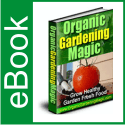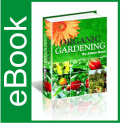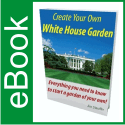How To Plan a Vegetable Garden
How To Plan a Vegetable Garden
Article by David Asbury
Have you had recurring thoughts about planning a new vegetable garden, but do not know where to start? Maybe you’ve contemplated what it would be like to grow your own nourishing organic food. If you are like many people, you’re prepared to start growing your own food and acknowledge that you want to supply a meal for your family regardless what life throws at you. Follow this vegetable garden guide and you will be comfortably on your way to gleaning plentiful harvests for many years to come.
What Plant Zone Am I In?
This is one of the most crucial questions you ought ask yourself before embarking down the gardening path. Recognizing your USDA plant zone will help you ascertain what plants you can and cannot grow prosperously in your new vegetable garden. Plant growing zones are a mere indicator of when your regional average last frost (for spring) and first frost (for fall) dates occur. Many, or should I say most, vegetable garden plants are easily killed off by frost whereas flowering shrubs and trees just go into winter dormancy. If you establish plants too early in the spring and your seedlings get hit by a late frost, you can say goodbye to those seedlings and all of your hard work that went into growing them. And recognizing your first frost date in the coming fall will assist you in knowing when to plant your fall crops so you’ll have adequate time to harvest a tidy sum of vegetables from the garden before those plants are wiped out.
Location of your Garden
Planning where to situate your garden is a very significant detail. Evidently, you would not wish to plant your garden under the broadest shade tree in your backyard. Vegetable plants need lots of sun to grow and a garden with half a day of shade will give you very poor effects. Learn how to take a soil pH test to make sure you get the best results. Try to choose the brightest location you can detect for your vegetable garden. If at all possible, situate your garden in close proximity to a clean water source. You never know when the next big drought is going to occur and hauling water to your vegetable garden is no fun at all. Hopefully you’ll have a flat piece of land to locate the garden. If you have no other choice than the side of a hill, you can tier the land and successfully grow vegetable garden plants.
Buying Vegetable Seeds or Vegetable Plants
Many gardeners love purchasing their vegetable plants from their local garden center. But with this process you relinquish your right to decide exactly what assortment of vegetable plants you want to grow. You will most certainly have a better choice of plants to choose from if you grow your vegetable plants from seed. Let’s face it, many garden centers have yet to jump on the heirloom and open-pollinated garden wagon. If you want to save seeds from your garden every year, you need to choose an open-pollinated vegetable plant to grow. Saving seeds from hybrid vegetables, what you will likely find at the majority of big box garden centers, will give you plants that will most likely not have the same characteristics as the plants from the year before. Make your vegetable seed selections wisely. Order some free vegetable garden seed catalogs in early winter and you’ll have plenty of time to choose what vegetable varieties you wish to grow by the time spring rolls around.
Garden Soil Properties
Your garden soil will either make or break your new vegetable garden. First thing you want to do with a new garden is have a soil pH test done. This will tell you whether your soil is either too acid or alkaline. The best way for new gardeners to have their soil pH tested is through their local Cooperative Extension Office. The test results will show what will be recommended for your particular soil. You may also wish to amend your garden soil with compost to improve the humus content. This just helps make the soil a better place for your vegetable plants to thrive.
Organic Or Chemical
You really need to deliberate whether you’ll use chemicals or not in your new vegetable garden. Many organic gardeners eschew the use of chemicals in their vegetable gardens. For them, organic gardening is the only way to go and improving your garden soil with compost is an excellent way to begin gardening organically. And you most certainly can get by without using chemicals…it just takes a bit more dutiful effort on your part. First you need to learn more about organic gardening principles. Start by making your own compost in a compost bin. Or make your own leaf mold by just bagging up some leaves and letting them sit until they decompose. Both of these organic soil amendments add an array of nutrients and beneficial micro-organisms to your garden soil.
We live in a spray it and forget it type world, so growing organically is definitely going against the grain. The desire to feed your family healthier food has to come from deep within you for organic gardening to really work. So when you’re out there doing the picking bugs by hand that a chemical spray would take care of in seconds, remember why you are doing it and it will make it all worth it. You may wish to build your own garden structures to help with your best gardening efforts. You can build a garden shed to store your garden tools or build a greenhouse or mini greenhouse to start seeds early each spring. These garden structures will come in handy if you expect to really get into gardening in the near future.
About the Author
The easiest way to start with organic gardening is by simply using compost and leaf mold in your vegetable garden beds. You can also make your own compost in a homemade compost bin that you can build at home. To start your garden out right, always have a soil pH test made to make sure your garden plants perform at their very best.
Use and distribution of this article is subject to our Publisher Guidelines
whereby the original author’s information and copyright must be included.

 August 25, 2012
August 25, 2012 







